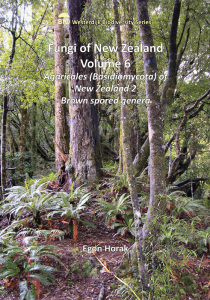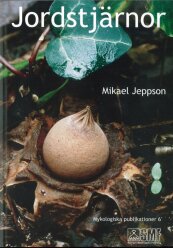Westerdijk Biodiversity Series 16 (2018)-Fungi of New Zealand vol.6-Egon Horak
€55.00 included CZ VAT
€55.00 without VAT
Agaricales (Basidiomycota) of New Zealand. 2. Brown spored genera p.p. Crepidotus, Flammulaster, Inocybe, Phaeocollybia, Phaeomarasmius, Pleuroflammula, Pyrrhoglossum, Simocybe, Tubaria and Tympanella
|
Country | % VAT (books) | % VAT | |
|---|---|---|---|
| DEU | 7 | 19 | |
| HUN | 5 | 27 | |
| AUT | 10 | 20 | |
| BEL | 6 | 21 | |
| BGR | 9 | 20 | |
| DNK | 25 | 25 | |
| EST | 9 | 20 | |
| FIN | 10 | 24 | |
| FRA | 5,5 | 20 | |
| HRV | 5 | 25 | |
| IRL | 0 | 23 | |
| ITA | 4 | 22 | |
| CYP | 5 | 19 | |
| LTU | 9 | 21 | |
| LVA | 5 | 21 | |
| LUX | 3 | 16 | |
| MLT | 5 | 18 | |
| NLD | 9 | 21 | |
| POL | 5 | 23 | |
| PRT | 6 | 23 | |
| ROU | 5 | 19 | |
| GRC | 6 | 24 | |
| SVK | 10 | 20 | |
| SVN | 5 | 22 | |
| ESP | 7 | 21 | |
| SWE | 6 |
25 |
The price is valid for Czech customers only. Due to a new regulation of the European Parliament the final price must be calculated according to the country of final destination starting from 1st July 2021. Please take a look at the chart above for valid VAT rate in your country.
https://ec.europa.eu/taxation_customs
Warranty (months) 24
Availability 14 days
This volume treats the majority of New Zealand’s agaric genera with a brown to rust brown spore print that have traditionally been placed in the families Crepidotaceae, Cortinariaceae and Galeropsidaceae. Excluded are fungi from the species-rich and taxonomically difficult genus Cortinarius and its segregates. This volume provides descriptions, illustrations, and colour photographs of all the species presently known from New Zealand for the ten treated genera, together with keys for the identification of both the genera and the New Zealand species.
Twenty-six Crepidotus species are accepted for New Zealand, including 21 described as new. Twenty-two of these species are endemic, another two indigenous and known also from Australia and/or New Guinea, and two are possibly exotic. These fungi are typically small, the stipe eccentric, poorly developed or absent, and cap dorsally or laterally attached to the substrate. Ecologically, they are saprobic, perhaps rarely parasitic, on rotting bark or wood.
Three species are accepted in Flammulaster for New Zealand, one endemic, the others indigenous and known also from southern South America. Ecologically, these fungi are saprobic on soil among litter or on rotten bark/wood/leaves of broadleaf trees, conifers and monocotyledonous plants. They are small, fragile agarics with a pale brown spore print.
Forty-three species of Inocybe are recorded for New Zealand, one with two varieties and a further species is tentatively accepted for New Zealand. Nineteen species are described here as new. All of the taxa treated are accepted as indigenous, 43 are endemic and two also found in tropical Asia. In New Zealand these fungi are ectomycorrhizal with Kunzea, Leptospermum or Nothofagus. These agaricoid fungi typically have fibrillose or squamulose caps and often have distinctive odours.
Phaeocollybia species are saprobic or parasitic on roots, typically the stipe tapers to a long, rooting base. Eight species are recognized from New Zealand but two remain undescribed because they are from single, poor specimens. Of the six named species, three are newly described here. Five of these species are endemic, the other indigenous and found also in Australia and Papua New Guinea.
Phaeomarasmius is a genus of saprobic agarics with small, tough fruiting bodies. One endemic species is accepted for New Zealand and it is described here as new.
Pleuroflammula includes small, saprobic fungi with stipes poorly developed or lacking, the cap attached directly to the decaying woody substrate on which these fungi grow. Two species are accepted for New Zealand, both endemic.
Pyrrhoglossum is biologically and macroscopically similar to Pleuroflammula. Two indigenous species are accepted for New Zealand, one endemic, the other widely distributed in tropical Asia.
Simocybe species are saprobic agarics typically with the dry cap having a wrinkled, velvety or granular surface. Seven species are accepted for New Zealand, one of these is described here as new. Five of the species are endemic to New Zealand, the other two found also in south eastern Australia.
Fifteen Tubaria species are accepted for New Zealand, 10 described here as new. Thirteen of the species are endemic, the other two found also in Australia and Papua New Guinea. These saprobic agarics typically have broadly attached or subdecurrent gills and veil remnants covering the dry caps.
The single endemic Tympanella species is characterized by its secotioid fruiting body. It is saprobic on soil amongst litter in all kinds of forest.
205 pp., fully illustrated with colour pictures (A4 format), paperback, 2018

 english
english



